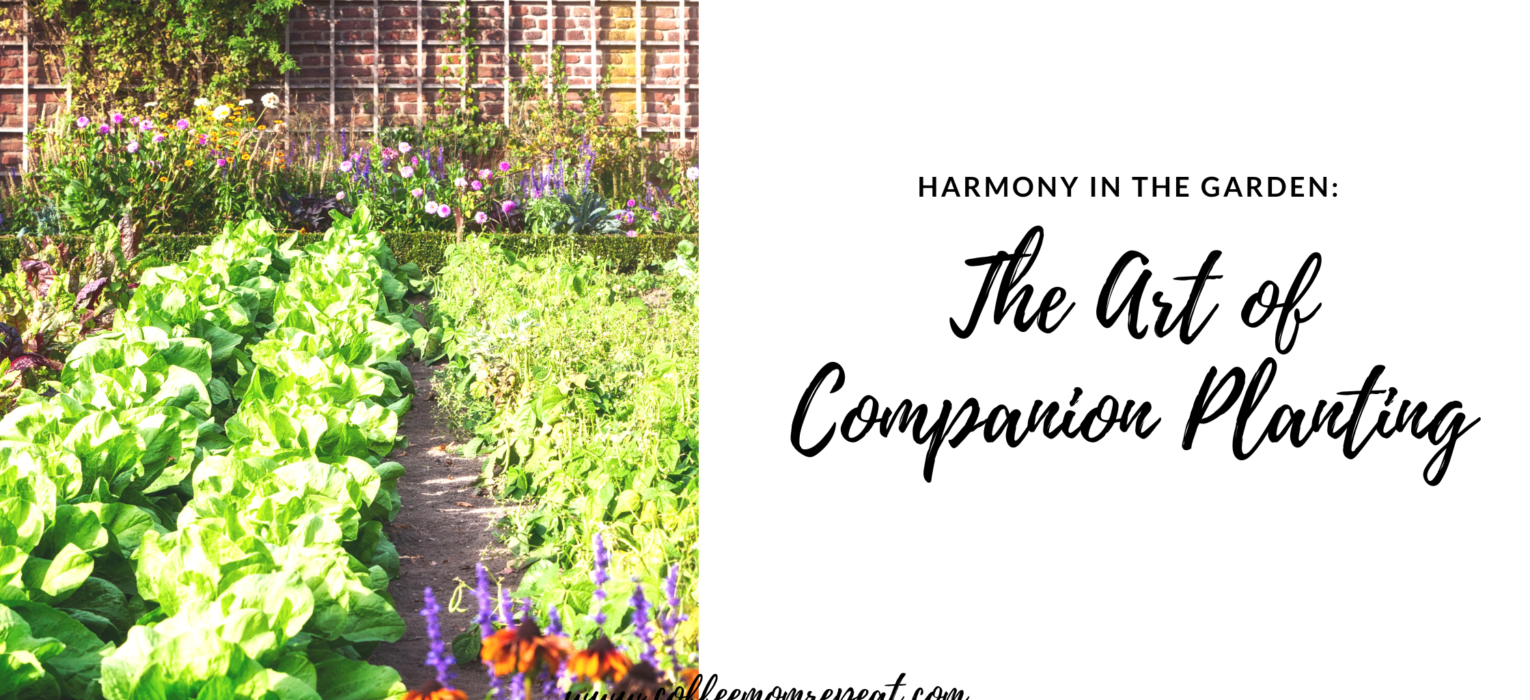Welcome to the verdant world of companion planting, where each plant becomes a strategic ally, harmonizing and enhancing the vitality of its garden companions. This age-old gardening technique is more than just arranging plants—it’s a dance of biodiversity that fosters a thriving ecosystem. Let’s explore the art of companion planting and discover the symphony of benefits it brings to your garden.

In the heart of companion planting lies the wisdom of pairing plants that complement each other, whether through pest control, nutrient sharing, or overall mutual support. It’s a garden tango that redefines the traditional notions of solitary growth. Here are some fascinating insights into the captivating world of companion planting:
1. Pest-Repelling Partnerships:
- In the garden theater, some plants are natural defenders, warding off pests like knights in shining green armor. Marigolds, with their vibrant blooms, deter nematodes, while aromatic herbs like basil and rosemary act as sentinels against unwanted insect invaders. Additional pest-repelling companions include:
- Chives (repel aphids)
- Nasturtiums (attract aphids away from other plants)
2. Dynamic Duo for Optimal Growth:
- Certain plants make stellar roommates, enhancing each other’s growth and flavor. Take the classic pairing of tomatoes and basil—beyond their culinary chemistry, basil protects tomatoes from certain pests, while tomatoes provide shade for basil, creating a mutual haven. Additional dynamic duos include:
- Cucumbers and radishes
- Carrots and onions
3. Nitrogen-Fixing Allies:
- Legumes take center stage in the nitrogen-fixing ballet. Plants like peas and beans have a magical ability to convert atmospheric nitrogen into a form usable by plants. When nestled alongside nitrogen-hungry crops like corn or lettuce, they generously share their nitrogen wealth. Additional nitrogen-fixing allies include:
- Clover
- Alfalfa
4. Underground Symphony:
- The world beneath the soil is an orchestra of interactions. The trio of corn, beans, and squash, known as the Three Sisters, exemplifies this underground synergy. Corn provides support for beans to climb, beans fix nitrogen for all three, and squash acts as a living mulch, suppressing weeds and conserving moisture. Additional underground symphony contributors include:
- Potatoes
- Onions
5. Trap Cropping Drama:
- Picture a garden soap opera where certain plants play the role of decoys to divert pests. This is the trap cropping strategy in action. Nasturtiums, for instance, attract aphids away from more delicate plants, sacrificing themselves for the greater good. Additional trap cropping actors include:
- Sunflowers (attracting pests away from other plants)
6. Intercropping Choreography:
- Intercropping is the dance of planting different crops in close proximity. This not only maximizes space but also confuses pests and provides a diverse microenvironment. Carrots, onions, and lettuce intermingle in a lively display of intercropping synergy. Additional intercropping partners include:
- Radishes with spinach or lettuce
- Beans with corn
7. Beneficial Insect Banquets:
- The garden soirée extends to beneficial insects. Dill and fennel, with their delicate umbels, attract predatory insects like ladybugs and parasitic wasps, creating a natural defense against garden pests. It’s an insect banquet where everyone is invited, except the troublemakers. Additional beneficial insect banquets include:
- Yarrow (attracts predatory wasps)
- Calendula (attracts hoverflies)
8. Shade-Loving Plant Partnerships:
- Beneath the canopy of taller plants, shade-loving companions find refuge. Spinach or lettuce, thriving in the dappled shade of sunflowers or trellised beans, showcase the art of utilizing vertical space and fostering a balanced microclimate. Additional shade-loving partners include:
- Beets
- Kale
9. Aromatic Allure:
- Fragrance takes center stage in the aromatic allure of companion planting. Lavender, with its sweet scent, not only adds charm to the garden but also deters pests like moths and fleas. It’s a sensory symphony that transcends visual beauty. Additional aromatic companions include:
- Thyme
- Oregano
10. Continuous Harvest Waltz:
- Extend the growing season through the continuous harvest waltz. Succession planting of quick-growing crops like radishes or lettuce between slower-growing companions ensures a bountiful harvest throughout the growing season. Additional continuous harvest partners include: – Arugula – Swiss chard

And so concludes our journey through the enchanting world of companion planting—a dance of biodiversity, mutual support, and flourishing gardens. As you cultivate your green haven, let the art of companion planting guide your choices and create a harmonious symphony of growth. In this garden ballet, every plant is a partner, and together, they create a masterpiece of nature’s design. 🌿🌺🎶

